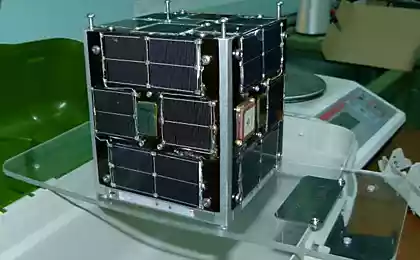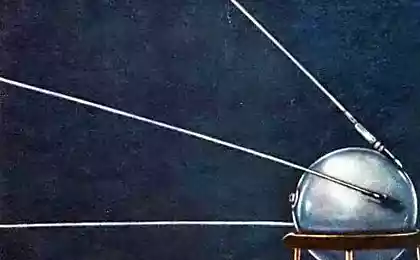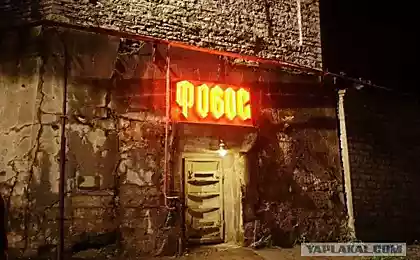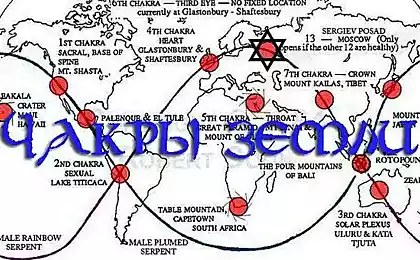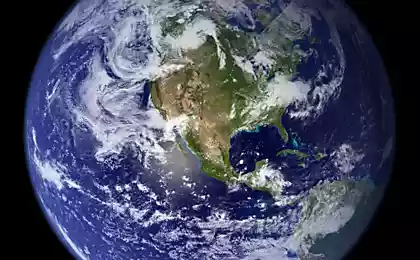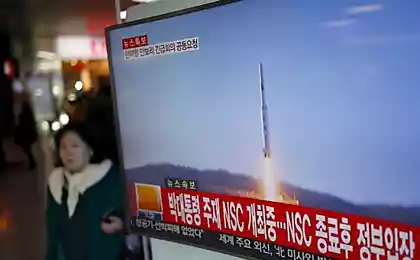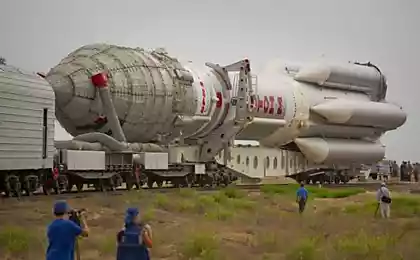1213
50 years of the launch of Sputnik

Back in 1939, one of the founders of practical astronautics in our country, a close associate of Sergei Korolev Mikhail Tikhonravov wrote: "Without exception, all work in the field of rocketry in the end lead to a space flight." Subsequent events have confirmed his words: in 1946, almost simultaneously with the development of the first Soviet and American ballistic missiles began to develop the idea of launching an artificial earth satellite.
Time was heavy and anxious. Almost ended the Second World War, and the world is on the verge of a new, this time nuclear. There was an atomic bomb, and hastily designed delivery vehicles - primarily missile systems. May 13, 1946 the Council of Ministers of the USSR adopted a detailed Resolution on rocket weapons, the creation of which was declared an essential task of the state. They ordered the creation of a special committee on jet technology and dozens of new enterprises - research institutes, design bureaus; plants changed its production of new technology, created a testing ground for. On the basis of the artillery factory number 88 was established State Union Research Institute (SRI-88), which became the lead organization for the entire range of work in this area. 9 August of the same year by order of the Minister of Defence Korolev was appointed chief designer of ballistic missiles, long-range, and on August 30 he became head of the department of ballistic missiles SKB NII-88. September 17 began flight tests "product number 1" - R-1 rocket.
It is in this context that began the creation of an artificial Earth satellite, which required to attract enormous financial, material and human resources. In other words, demand government support.
Sergei Korolev at the site in Kapustin Yar. 1953. File photo Asif Siddiqui (Asif Siddiqi)
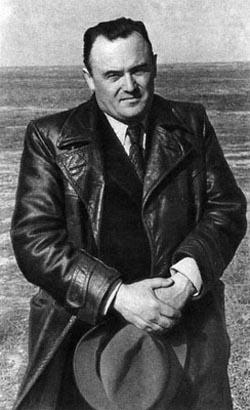
It is known that such support is only on the express condition that the decision-makers supported projects submitted feasibility and necessity. But senior executives, both Soviet and American, in the issue of satellite launch were full of like-minded: they not only did not see the need for this, but thought the idea of a fantastic and harmful, distracting forces and means of the development of military missiles. It is surprising that, despite the dramatic differences in the political, technical, economic, social and cultural situation of many of the features of space the idea of "us and them" were similar, and even a chronology of key events about the same.
In the first stage (until 1954) Development of ideas satellite launch was carried out in a misunderstanding and opposition from senior executives and persons determined by the technical policy. In our country, the main ideologue and leader of the practical work for the exit into space was Sergei Pavlovich Korolev (1907-1966), in the United States - Wernher von Braun (Wernher von Braun, 1912-1977).
May 12, 1946 a group of von Braun presented to the Ministry of Defense (US Department of Defense) report "Preliminary design of an experimental spacecraft orbiting the Earth", which said that the rocket to launch a satellite weighing 227 kg to a circular orbit at an altitude of about 480 km may be established for five years, ie by 1951. On offer von Braun military department has refused to provide the necessary appropriations.
In the USSR, Mikhail Tikhonravov (1900-1974), who worked at SRI-1 MAP, proposed a draft high-altitude rocket BP-190 with a pressurized cabin with two pilots on board for the flight on a ballistic trajectory with the rise to a height of 200 km. The project was reported in the Academy of Sciences of the USSR and the board of the Ministry of Aviation Industry, and received a positive evaluation. May 21, 1946 Tikhonravov sent a letter to Stalin, in this case, and fell.
After moving to the NII-4 Tikhonravov Ministry of Defense and his group of seven men continued to work on issues of scientific substantiation of the possibility of launching an artificial earth satellite. March 15, 1950, he reported the results of the research work entitled "Composite liquid fuel rocket long-range satellites" in the plenary scientific and technical conference of the Department of Applied Mechanics, Academy of Sciences of the USSR. His report was approved, however Tikhonravov now and then received from his superiors "bumps and bruises", but from his fellow scientists - ridicule as cartoons and epigrams. In accordance with the "spirit of the age" (the beginning of the 1950s) was even sent a "signal to the Top" - they say that public funds are wasted, and you have to look, not sabotage it? Inspectorate of the Ministry of Defense, which checked the NII-4, recognized the work of the group Tikhonravov unnecessary, and a fantastic idea and harmful. The group was disbanded, and Tikhonravov demoted.
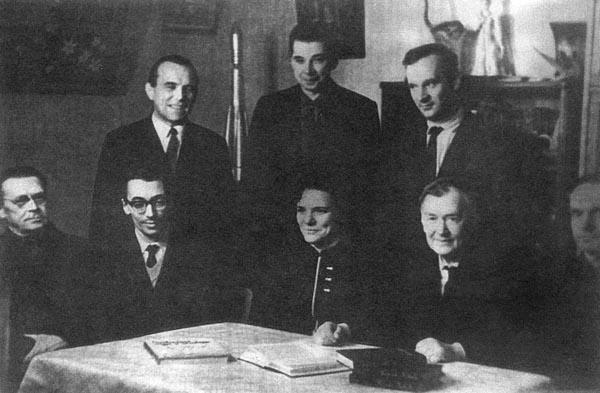
Tikhonravov Group developed the concept of an artificial Earth satellite from 1950 to 1954, almost "underground". In the foreground (from left to right): Mr Galkovsky Gleb Maksimov, Lydia Soldatov, Michael and Igor Tikhonravov Yatsunsky; in the background (standing): Gregory Moskalenko, Oleg and Igor Gurko Bazhinov. File photo Asif Siddiqui (Asif Siddiqi)
Meanwhile, work continues, in the years 1950-1953 studies were conducted secretly, almost surreptitiously, and in 1954 the results were released. And then the idea could "come out of hiding." This, however, contributed some additional circumstances.
King and Brown, in their own country, not allowed to efforts to achieve an understanding of decision-makers, putting forward the arguments available to these individuals military and political importance of the development and launch of the satellite.
Most actively supported the idea of launching satellites President of the USSR Mstislav Keldysh. Since 1949, academic institutions conducted studies of the upper atmosphere and near-Earth space, as well as the reactions of living organisms in rocket flights. Rockets for research developed on the basis of operational missiles, they were called "academic". First geophysical rocket was a missile P1-A, developed on the basis of the combat missile R-1.
In October 1954, the organizing committee of the International Geophysical Year addressed to the leading world powers to consider the possibility of launching satellites for scientific research. June 29, US President Dwight D. Eisenhower (Dwight David Eisenhower, 1890-1969) announced that the US will launch a satellite. Soon, with the same statement the Soviet Union. This meant that the work on the creation of an artificial Earth satellite legalized and ridicule and denial of ideas is no space left.
June 26, 1954 Korolev presented to the Minister of Defense Industry Dmitry Ustinov memorandum "On the artificial earth satellite" prepared Tikhonravov, accompanied by a review of works on satellite abroad. The note said: "At the moment there are real technical capabilities to achieve with missiles rate sufficient to create an artificial Earth satellite. The most realistic and feasible in the shortest possible time is the creation of an artificial Earth satellite in the form of an automatic device, which would be provided with scientific equipment, had radio contact with Earth and orbiting the Earth at a distance of 170-1100 km from its surface. Such a device will be referred to simply as a companion ».

PS-1 satellite was arranged quite simple: inside him almost nothing, except the radio, sends signals to Earth, and power supplies. Photo: NASA
In the US, May 26, 1955 at a meeting of the National Security Council (National Security Council) approved a program run scientific satellite - on the condition that it will not interfere with the development of military missiles. The fact that the launch will take place during the International Geophysical Year, emphasize its peaceful character, according to the military. Unlike our country, where everything was "in the hands of one" - Queen and Tikhonravov - these works were carried out by all armed forces, and I had to decide which project to prefer. To do this, set up a special commission. The final choice was made between the project Research Laboratory Navy (satellite «Vanguard») and Project RAND (satellite «Explorer», developed under the direction of Wernher von Braun). Brown said that if sufficient appropriations satellite may be launched in January 1956. Perhaps if he believed that the United States would launch its own satellite before the Soviet Union. Nevertheless, the choice was made in favor of "Vanguard» («Vanguard»). Apparently, then played the role of personality von Braun: Americans do not like to see the "father" of the first American satellite was the German Nazi recent past. But, as subsequent events showed, their choice was not too successful.
1955. In the Soviet Union is working out an ICBM R-7. Tikhonravov Group is actively working on the problems associated with the creation of a satellite. January 30, 1956 the USSR Council of Ministers passed a resolution on the development of object D (PPE weight of 1000-1400 kg and with scientific equipment to 200-300 kg). Term run - 1957 th. Draft project ready by June. Is developing ground command and measuring complex (CIC) to provide satellite flight.
Resolution of the USSR Council of 3 September 1956 on the territory of our country along the flight path was ordered to organize seven ground tracking stations (NPC). The task was entrusted to the Ministry of Defence, the parent organization defined NII-4.
By the end of 1956 it became clear that the appointed time to prepare D object does not succeed, and it was decided to urgently develop a simple small satellite. It was a spherical container with a diameter of 580 mm and weight 83 kg 6 with four antennas.
February 7, 1957 issued a decree of the Council of Ministers of the USSR on the launch of the first artificial satellite, and 4 October launch was successfully carried out. The device was launched into orbit with a perigee of 228 km and an apogee of 947. During one cycle is 96, 2 min. The satellite is in orbit 92 days (until January 4 th 1958), carrying 1,440 rpm.
By factory documentation satellite called PS-1, that is the simplest satellite. However, engineering, scientific and technical challenges that were faced by developers, were by no means simple. In fact it was to check the possibility of launching a satellite, which ended in the words of Academician Boris Chertok, one of the closest associates of the Queen, the triumph of the launch vehicle.
On board the satellite thermal control system was installed, the sources of power supply, two radio transmitters working on different frequencies and signals the form of telegraph parcels (the famous "beep-beep-beep"). In orbital flight conducted research density of the upper atmosphere, the nature of radio wave propagation in the ionosphere, perfected the monitoring of the space object from Earth.

The first official photo of the Soviet satellite was made on October 17 Telescope Observatory Southern California. What is the name of the satellite, can be understood in its movement relative to the two stars in the constellation Auriga. Photo: Smithsonian Astronphysical Observatory / NASA
The reaction of the international community to this event was very stormy. There was no indifferent. Millions and millions of "ordinary people" of the planet took this event as the greatest achievement of the human mind and spirit. The passage of the satellite over the different localities are announced in advance in the press, and people on different continents came out of their houses at night, looked at the sky and saw: the fixed stars among the usual one - moves!
In the US launch of the first satellite made a real shock. It turned out suddenly that the Soviet Union, the country has not had time yet to recover from the war really is a powerful scientific, industrial and military potential, and that it must be considered. US prestige as a global leader in science and technology and military staggered. This caused confusion and fear: in the sky above his head freely and with impunity alien flying machine! And there is already a sense of security and a sense of his own superiority. It was a shock not only for the top leadership of the United States, but also for the millions of ordinary Americans. The depth of the shock reflected in the words of one of the senior political figures: "I do not believe that this generation of Americans willing to accept the idea that every night have to sleep in the light of the moon communist».
At this stage, started "space race": in an open letter to President Eisenhower editor of «Jane's Missiles & Rockets» Bergaust (Erik Bergaust) wrote: "We must be the first in space exploration ... We have worked feverishly to solve the technical problems that undoubtedly decided to Russia ... In this race (and this is certainly a race) prize will be given only to the winner, the prize this - leadership of the world ... ».
3 November of the same 1957 was launched a second satellite weighing 508 kg 3. This was the real scientific laboratory. For the first time in space has gone highly organized living creature - the dog Laika.
Americans had to hurry: a week after the start of the second Soviet satellite, November 11 White House announced the upcoming launch of the first satellite USA. Running on 6 December and ended in complete failure: after two seconds after lift-off from the launch pad rocket fell and exploded, destroying the launch pad. In the future, the program "Vanguard" was very hard, from eleven starts, only three were successful. The first American satellite still became the "Explorer" von Braun. It was launched on January 31, 1958-th.
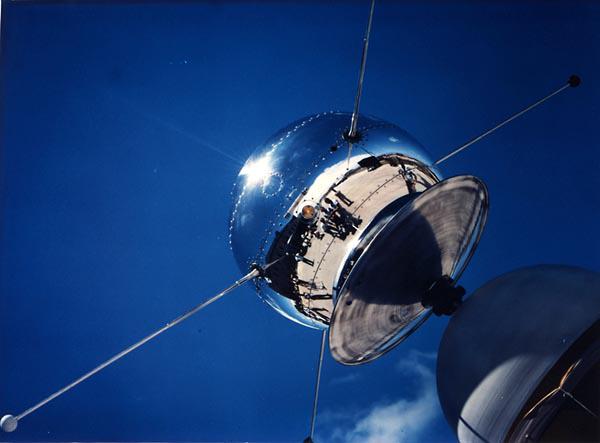
American satellite "Vanguard 2" was launched June 26, 1958. Photo: NASA
The total weight of the satellite is inseparable from the third stage was 14 kg, the weight of scientific equipment 5 kg. Conducted studies of cosmic rays and radiation levels outside the atmosphere, meteor flux density microparticles et al. Were discovered radiation belts around the Earth, which were called the Van Allen belts in honor of the American physicist, under whose leadership was developed with scientific instruments. This was the first discovery in the history of space exploration, it became a scientific sensation.
The first successful launch of the "Vanguard" took place on 17 March 1958. The satellite was a sphere with a diameter of 16 cm and a weight of 1, 5 kg, and why was nicknamed "Orange". On board were first installed solar panels, which continue to operate in 1959, and radios.
Pioneers of practical astronautics, the creators of the first artificial satellites were able to look far ahead. But in those years, they could hardly have imagined that their small and simple to the modern view of apparatus give rise to the formation of a grand system. Over the past 50 years into orbit was launched more than one thousand spacecraft. They encircle the Earth's orbit dense mesh, they "see" everything that happens on Earth. Taken together, they represent a huge information system.
Space in ensuring the functioning of the human community plays a tremendous, if not primary, role. This communication, television, navigation, meteorology, the study of Earth's natural resources, monitoring of the Earth's surface, and more. If suddenly the system serving the needs of the earth, somehow disappeared in the world would come chaos.
A Russian word "satellite", which 50 years ago traveled around the world and became known to everyone, now turned into the word of the general cultural rather than from a technical vocabulary.
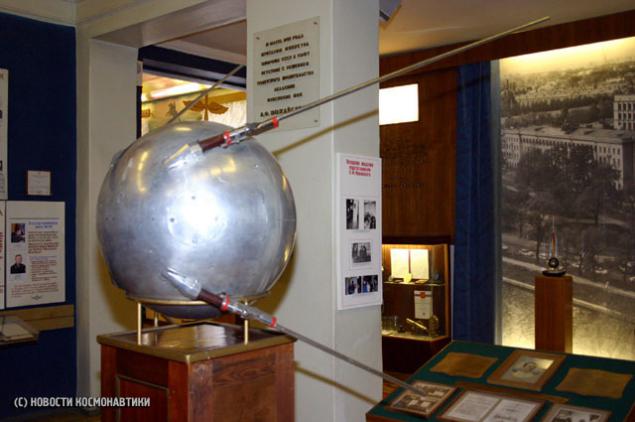
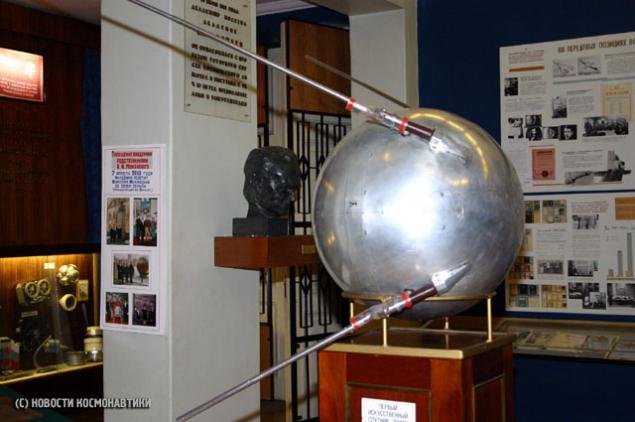
-
